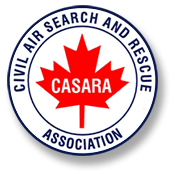The following is an excerpt from the Commercial and Business Aviation Advisory Circular 0141, the purpose of which is to notify pilots and air operators of the potential hazards associated with a low energy balked landing or go-around. Since the circular went only to commercial operators, it was suggested that many private operators could also benefit from the information.
Background — During the aircraft certification process, handling procedures and performance are assessed across a wide range of operating weights, configurations, and flight profiles. The Aircraft Flight Manual defines the boundaries within which the aircraft may be operated safely.
It is a common belief among pilots and many air operators that aircraft are certified to successfully complete a balked landing or go-around from any point during the approach or landing phase. This is not the case.
In brief, an aircraft is not certified to successfully complete a go-around without ground contact once it has entered the low-energy landing regime. The low-energy landing regime is defined as:
- Aircraft flaps and landing gear are in the landing configuration;
- Aircraft is in descent;
- Thrust has stabilized in the idle range;
- Airspeed is decreasing; and
- Aircraft height is 50 ft.* or less above the runway elevation.
* Note: 50 ft. is a representative value. A given aircraft may enter the low-energy landing regime above or below 50 ft. in accordance with approved landing procedures for that type.
Policy — The decision to place an aircraft into the low-energy landing regime is a decision to land. If there is any doubt regarding the probability of a safe landing, a go-around or balked landing must be initiated prior to entry into this regime. An attempt to commence a go-around or balked landing while in the low-energy landing regime is a high-risk, undemonstrated manoeuvre.
In the extreme case where such action is required, pilots should be aware that ground contact is likely and any attempt to commence a climb before the engines have achieved go-around thrust may result in a stall. Turbo-fan engines may require as long as 8 seconds to accelerate from idle to go-around thrust.









